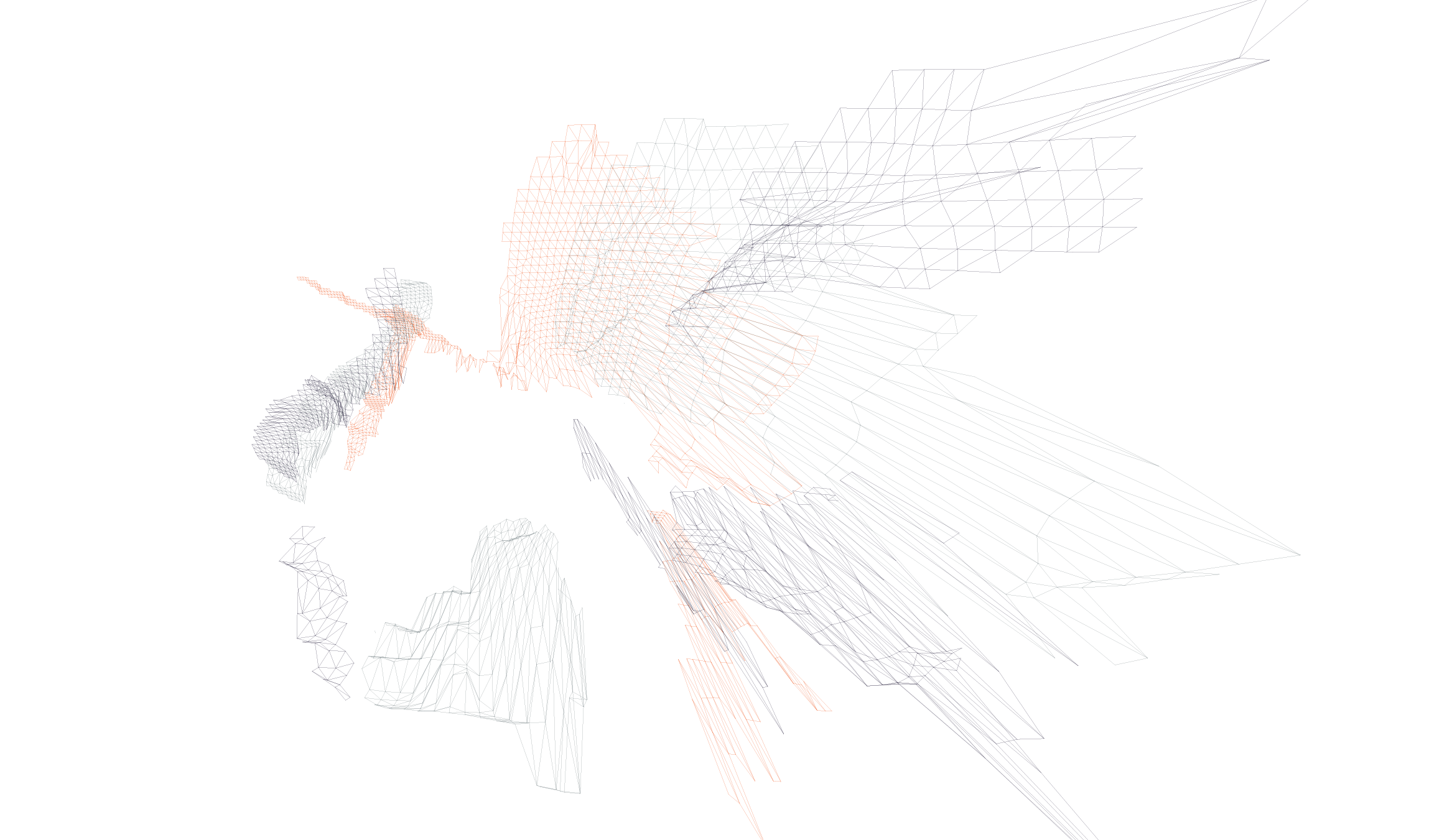
TUPAIA,
KYBERNETES &
LARA CROFT
Bodily Perspectives on Postdigital Spaces
Eva Sommeregger

This book exhibits an investigation of the remarkable ability to simultaneously occupy two different places: as a form of second nature, contemporary Western bodies rely on digital devices “to travel in one direction through sound or image while proceeding elsewhere physically.”1 In an Artforum magazine article entitled “Navigating the New Territory: Art, avatars, and the contemporary mediascape”, art historian David Joselit observes the uncanny situations that accompany these particular pairings of bodies and technologies: “It’s the electric whisper bleeding from earphones in subway cars, and it’s the disarming experience of believing for a minute that the well-dressed guy talking to himself on the street is crazy—until you see his headset.”2 Joselit frames these bizarre phenomena as “symptoms of a new spatial order,” in which the Walkman, iPod and smartphone gather in a seemingly invisible layer that is not only co-existent but “coextensive” with physical space, meaning that two worlds—the physical and the media-based—occupy the same place.3
This “new” order is no longer so new; today it is commonplace. Since Joselit’s text was published in 2005, to my mind, the tone of discussing this new spatial order and how it affects us bodily has shifted from celebratory to overburdened, from an interest in the peculiar to a state of indifference. The relevant phenomena have expanded from the streets, as noted in the article, into bedrooms, particularly in the face of the COVID-19 pandemic, which has not brought changes to the coextensive nature of this spatial order as such but has made it more immediate. A new urgency seems to exist in the need to discuss how this spatial order may be inhabited, especially regarding an empowerment on the part of the users involved—the Artforum article offers a set of key notions from which to depart.
In the description of the bodily state of simultaneously inhabiting two worlds, the practice of navigating stands out. Navigation, literally the “act of moving on water in ships or other vessels” also refers to the “science or art of directing the course of vessels as they sail”. The term is derived from the Latin navigatio, a combination of navis (ship) and agere (set in motion).4 Navigation thus characterises a movement of a human body aided by a means of technology (vessel)—a venture into a terrain that is difficult to inhabit for human bodies (water) and that could not be occupied to that extent without the device or other means of technology. Although the term itself is not used herein, this article pins down the characteristics of a post-digital terrain.5 “Post-digital” describes a willingness to transcend the binaries of online/offline and zero/one; post-digital stances instead attempt to unite the digital and the physical into a single order, shifting the focus from the media themselves to a more anthropological take on everyday life’s reality shaped by a co-existence of digital technologies and physical-material circumstances. As its title suggests, Joselit’s article explores a new territory: the amalgamation of the worlds of physical and digital into a single territory.
I have only begun to understand this fascinating territory resulting from the merging of two perhaps oft-clashing worlds by examining ways to investigate and interpret the role of the mediating devices—from the earphones to the avatar. The example of the headset mentioned above links to Shuhei Hosokawa’s brilliant text “The Walkman Effect”, in which he describes the Walkman as a mobile, portable and visible device through which the bearer publicly reveals that they carry a secret.6 The gadget helps to open up a second world on top of ordinary urban life to the Walkman listener—a world that is not shared with anyone else but whose existence is nonetheless visible. 15

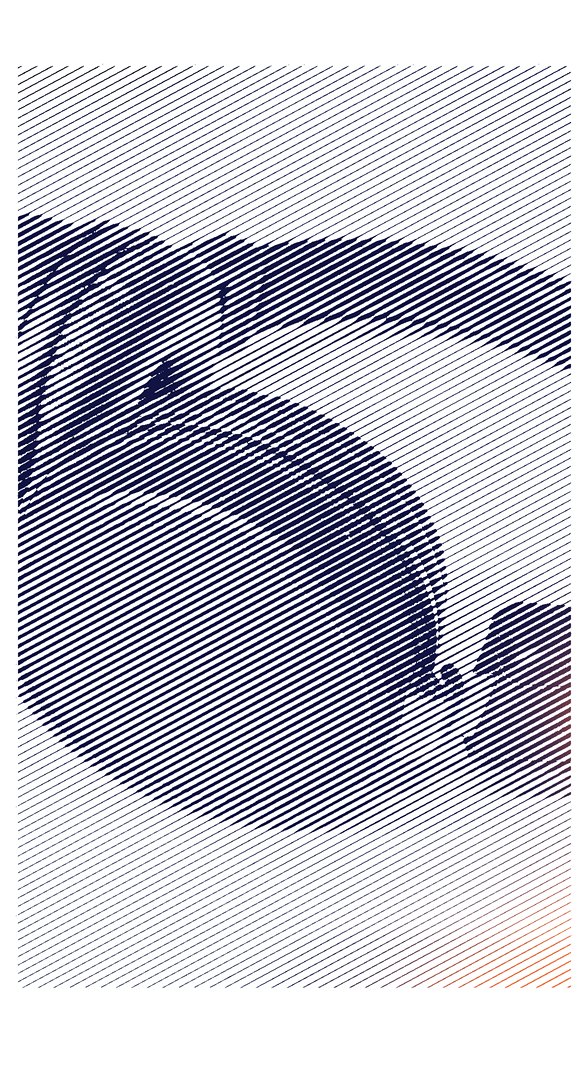
Tupaia's Map
Another secret-carrying device concerned with the collision of two worlds and the practice of navigation is a work from a different context: Tupaia’s map. Tupaia was a Polynesian navigator and priest who had significant influence on the expedition of the HMS Endeavour commanded by Captain James Cook during his first journey into the South Seas at the end of the 18th century, propelled by research interests and against a background of British geopolitical expansion. Tupaia acted as a mediator between the Europeans and various groups of indigenous people, and helped with issues of navigation. Tupaia joined the Endeavour’s crew at its departure from Tahiti in July 1769 and then successfully steered the ship over a month through areas uncharted by Europeans, making use of his excellent knowledge of the Southern Pacific indigenous method of navigation—a skill set relying not on maps but on itineraries remembered in narratives and chants passed on orally. The scientific crew on board the Endeavour tackled a cross-cultural project to have Tupaia make a map of islands in the South Pacific, a map that would represent a mystery to scientists for centuries the logic of which was deciphered only recently by scientists Lars Eckstein and Anja Schwarz, following a decolonial approach.7 Having been revisited several times by the cross-cultural mapping team consisting of Tupaia, Cook, ship master Robert Molyneux, junior officer Richard Pickersgill and botanist scientist Joseph Banks, the original map drafts, in which Tupaia marked the islands, have not survived. The map has only been preserved in the form of copies made by other researchers—one is located in the city archive in Braunschweig, another in the British Library in London—, in which Eckstein and Schwarz identified major differences that allowed them to shed light on the making of the map.
According to Eckstein and Schwarz’s presumed reconstruction of the actual sequence of events regarding the map’s creation, the Europeans started the notating process: following the logic of Western map-making, they drew two intersecting axes and a surrounding frame, marking the four cardinal directions and delimiting the map’s four quadrants before notating the locations of a series of islands they had already visited in the vicinity of the Society islands.
Mercator projection map started by the Europeans displaying a north arrow, the north-south and east-west axes, a frame and the islands they had visited (marked with an x by the author, redrawn from the Braunschweig city archive copy) Tupaia’s map shows island locations, from which composite itineraries may be reconstructed following Eckstein and Schwarz (1-2; 3-5b; 6-13; 14-21; 22-19;30-31b; 32-33). The connecting lines between the islands, the numbering logic and corresponding legend were added by the author. The resulting drawing displays similarities with maps of stellar patterns (drawn by the author tracing the Braunschweig version that copied the map’s first draft and thus contains unresolved islands remaining without a number; the British Library version is a copy of the map’s third draft stage and was seemingly fully deciphered by Eckstein and Schwarz) Tupaia’s map exemplifies how Polynesians had or would have travelled along pathways: it shows these itineraries, understood in multidimensional ways by Polynesians, as two-dimensional projections onto the flat surface of a piece of paper. From Cook’s notes, for example, Eckstein and Schwarz learned that distance, for Polynesians, is a dimension of time and space together and that the two cannot be separated: due the existence of trade winds, for example, Polynesians would measure routes in the number of days the journey would take—often with an outward journey’s length differering extensively from a return. It follows that these two journeys were understood by Polynesians as genuinely different, and thus the journey between two different locations cannot be understood in absolute spatial terms only, detached from the dimension of time or direction of the journey. List of Tupaia’s islands on a Mercator projection map, drawn by the author. The numbers refer to the legend on the previous spread Detail from Tupaia’s map, displaying the connection between the islands of Rurutu (1) and Ra’ivavae (2). Both islands reappear as part of a longer itinerary (6-13). Because it was mentioned first in the entries rediscovered by Eckstein and Schwarz, one may speculate whether Tupaia used this single connection to explain his mapping logic to the Europeans. Interestingly, Rurutu appears even another time within the cluster drawn by the Europeans (redrawn by the author tracing the Braunschweig city archive copy) Kybernetes’ observations Phantoms and avatars 1 David Joselit, Navigating the new territory: art, avatars, and the contemporary mediascape, Artforum, Vol. 43; pp. 276-279; June 2005; here p.276 2 Ibid. 3 Ibid. 4 Online Etymology Dictionary, Navigation, n.d., https://www.etymonline.com/search?q=navigation; retrieved 2021-11-08;18:00 5 Robert Pepperell, Michael Punt; The Postdigital Membrane: Imagination, Technology and Desire; Intellect Books; Bristol; 2000; p.2; The actual term “post-digital“ was coined by Kim Cascone in 2000, reworking Nicolas Negroponte’s concept of “beyond digital“ from a Wired Magazine article in 1999. See Nicolas Negroponte, Beyond Digital, Wired Magazine, Issue 6.12, December 1998; and http://en.wikipedia.org/wiki/Postdigital, retrieved 2021–11–29; 100 6 Shuhei Hosokawa, The Walkman Effect. Popular Music 4 (1984): 165–80. http://www.jstor.org/stable/853362. 7 Lars Eckstein and Anja Schwarz, The Making of Tupaia’s Map: A Story of the Extent and Mastery of Polynesian Navigation, Competing Systems of Wayfinding on James Cook’s Endeavour, and the Invention of an Ingenious Cartographic System; in: The Journal of Pacific History, Vol.54, Issue 1, p.1-95, 2019 See also Lars Eckstein, Anja Schwarz; Tupaia’s map, n.d., https://www.uni-potsdam.de/en/iaa-alc/tupaias-map; retrieved 2021-12-05;13:00 8 Tupaia (navigator), n.d., https://en.wikipedia.org/wiki/Tupaia_(navigator); retrieved 2021-12-08; 14:00 9 Polynesian Navigation, n.d., https://en.wikipedia.org/wiki/Polynesian_navigation; retrieved 2021-12-08; 14:00 10 Walter Sauer, Expeditionen ins afrikanische Österreich. Ein Reisekaleidoskop, Mandelbaum Verlag, Vienna/Berlin, 2014 11 Agnes Preusser, Weltmuseum Wien: Wie ein hawaiianischer Kriegsgott Wiener wurde, Kurier, 28.07.2021; For the inventory numbers, see the Weltmuseum’s online collection on https://www.weltmuseumwien.at/onlinesammlung/; retrieved 2021-12-12; 18:00 12 Philipp Blom, To Have and To Hold, Abrams Press, New York, 2004 13 Sven Lüttiken, An Arena in Which to Reenact in: Sven Lüttiken, Life, Once More: Forms of Reenactment in Contemporary Art, Witte de With, Rotterdam, 2005, pp.17-60 14 Alfred Korzybski,.,The International Non-Aristotelian Library Pub. Co.,Science and Sanity, 1933, pp. . 15 Ibid., See also Farnam Street Media, The Map Is Not the Territory, n.d., https://fs.blog/map-and-territory/; retrieved 2021-12-12;13:00 16 Gregory Bateson, Form, Substance, and Difference [1970], in: Gregory Bateson, Steps to an Ecology of Mind. Collected Essays in Anthropology, Psychiatry, Evolution, and Epistemology, Chicago/London 2000 [1972], pp. 454-471, here p.460 17 Ranulph Glanville, SECOND ORDER CYBERNETICS, in Systems Science and Cybernetics, [Ed. Francisco Parra-Luna], in Encyclopedia of Life Support Systems (EOLSS), Developed under the Auspices of the UNESCO, Eolss Publishers, Oxford, 2003 18 Barnabas D. Johnson, The Cybernetics of Society. The Governance of Self and Civilization, 1998, https://jurlandia.org/cybsoc/; retrieved 2021-12-12; 15:00 19 Ranulph Glanville, A ship without a rudder, in: Ranulph Glanville and Gerard de Zeeuw (editors), Problems of Excavating Cybernetics and Systems, BKS+, Southsea, 1997 20 Ronald R. Kline, The Cybernetics Moment Or Why We Call Our Age the Information Age, Johns Hopkins University Press, Baltimore, 2017, p.196 21 Ranulph Glanville, SECOND ORDER CYBERNETICS, op.cit. 22 Ibid. 23 Margaret Mead, The Cybernetics of Cybernetics, in Purposive Systems: Proceedings of the First Annual Symposium of the American Society for Cybernetics, eds. Heinz von Foerster, John D. White, Larry J. Peterson, and John K. Russell, New York, NY: Spartan Books, 1968, pp 1-11. An excerpt can be accessed via the following link from the American Society of Cybernetics’ website, https://asc-cybernetics.org/CofC/wp-content/uploads/2010/08/mead.html, retrieved 2021-12-12; 14:00 24 Farnam Street Media, The Map Is Not the Territory, n.d., https://fs.blog/map-and-territory/; retrieved 2021-12-12;13:00 25 A. Elizabeth Reichel, Writing Anthropologists, Sounding Primitives: The Poetry and Scholarship of Edward Sapir, Margaret Mead, and Ruth Benedict, University of Nebraska Press, Lincoln, 2021; p.1 26 Thilo Neidhöfer Arbeit an der Kultur Margaret Mead, Gregory Bateson und die amerikanische Anthropologie, 1930-1950, transcript, Bielefeld, 2021, p.9 27 A. Elizabeth Reichel, op.cit., p.3 28 Thilo Neidhöfer, op.cit., p. 10 29 Virginia Yans-McLaughlin, Science, Democracy, and Ethics. Mobilizing Culture and Personality for World War II, in: George W. Stocking, Jr. (editor): History of Anthropology, Vol. 4, Malinowski, Rivers, Benedict and Others. Essays on Culture and Personality, Madison 1986, pp. 184-217, here p.198 30 Thilo Neidhöfer, op.cit., p.10 31 Thilo Neidhöfer, op.cit., p.11 32 Ibid., p.23 33 Stuart Brand, For God’s Sake, Margaret. Conversation with Gregory Bateson and Margaret Mead. CoEvolutionary Quarterly, June 1976, Issue no. 10, pp. 32-44. 34 See British Film Institute; Screen Online: Phantom Rides. Vehicle-mounted cameras provide a popular spectacle for early filmgoers; n.d.; online publication; http://www.screenonline.org.uk/film/id/1193042/ retrieved 2021-12-12; 14:00 35 Vivian Sobchack, Carnal Thoughts: Embodiment and Moving Image Culture; University of California Press; Berkeley; 2004; p.149 36 Ibid.; pp.60, 61 See also Steven Shaviro, The Cinematic Body, University of Minnesota Press, Minneapolis, 1993; pp.255, 256 37 Avatar, n.d. https://en.wikipedia.org/wiki/Avatar; retrieved 2021-12-12;14:00 38 David Joselit, op.cit., p.279 39 Zoe Sofia, Virtual Corporeality: A Feminist View, pp.55-68 in (editor) Jenny Wolmark, Cybersexualities: A Reader on Feminist Theory, Cyborgs and Cyberspace, Edinburgh University Press, 1999 40 Astrid Deuber-Mankowsky, Lara Croft: Cyber Heroine, trans. Dominic J. Bonfiglio, University of Minnesota Press, Minneapolis, 2005, p.15 41 Helen Kennedy, Lara Croft: Feminist Icon or Cyberbimbo? On the Limits of Textual Analysis, The International Journal of Computer Game Research, Vol.2, Issue 2, December 2002 42 The Wachovsky brothers, The Matrix trilogy, 1999-2003; Rachel Talalay ; Tank Girl, 1995; Patty Jenkins, Wonder Woman, 2017 43 Helen Kennedy, op.cit. 44 Ibid. 45 Astrid Deuber-Mankowsky, op.cit., p.58 46 Helen Kennedy, op.cit. 47 Simon West, Lara Croft: Tomb Raider, 2001 48 Jan de Bont, Lara Croft Tomb Raider: The Cradle of Life, 2003 49 Kim Walden, Run, Lara, Run! The Impact of Computer Games on Cinema’s Action Heroine in: Rikke Schubart, Anne Gjelsvik (editors) Femme Fatalities: Representations of Strong Women in the Media; Nordicom, Göteborg, 2004; pp.71-88; here p.80 50 Ibid., p.81 51 Ibid. A more recent sequel (Roar Uthaug, Tomb raider, 2018 ) with Alicia Vikander in the lead does not bring any changes. 52 Esther MacCallum-Stewart, “Take That, Bitches!” Refiguring Lara Croft in Feminist Game Narratives, Game Studies, Vol.14, Issue 2, December 2014, See also Janine Engelbrecht, The New Lara Phenomenon: A Postfeminist Analysis of Rise of the Tomb Raider, Game Studies, Vol 20, Issue 3, September 2020 53 Kim Walden, op.cit., here pp.79-80 54 Ibid., p.75 and 87 55 Helen Kennedy, op.cit. 56 Janine Engelbrecht, The New Lara Phenomenon: A Postfeminist Analysis of Rise of the Tomb Raider, Game Studies, Vol 20, Issue 3, September 2020 57 Amanda Du Preez, Virtual Babes: gender, archetypes and computer games, Communicatio, 26(2), pp.18-27, 2000 58 Janine Engelbrecht, op.cit. 59 Sigmund Freud, Das Motiv der Kästchenwahl; in: Sigmund Freud, Das Lesebuch. Schriften aus vier Jahrzehnten. Ed. Cordelia Schmidt-Hellerau, S.Fischer, Frankfurt, 2006 [1913], pp.255-268, here p.268 60 Erik Porath, Gedächtnis des Unerinnerbaren: Philosophische und medientheoretische Untersuchungen zur Freudschen Psychoanalyse, Transcript, Bielefeld, 2005, p.497; See also Andreas Kraß, Meerjungfrauen: Geschichten einer unmöglichen Liebe, S.Fischer, Frankfurt, 2010 61 Morai, n.d., https://en.wikipedia.org/wiki/Moirai; retrieved 2021-12-12; 15:00 62 Elizabeth Grosz, Cyberspace, Virtuality and the Real in Architecture from the Outside: Essays on Virtual and Real Space, MIT Press, Cambridge MA, 2001, p.86 63 See Archive of Digital Art, Osmose, n.d.; https://www.digitalartarchive.at/database/general/work/osmose.html; retrieved 2021-12-12;16:00 64 James Jerome Gibson, The Ecological Approach to Visual Perception, Houghton Mifflin, Boston, 1979, p.224 65 Fabbula, Anti-Gone by Theo Triantafyllidis, n.d. https://fabbula.com/artists/anti-gone-by-theo-triantafyllidis/; retrieved 2021-12-12;18:00 imprint published in 2022 by Breite Gasse Publishing, Vienna ISBN 978-3-9505219-0-0 text, photographs, drawings, layout: Eva Sommeregger fonts: Plus Jakarta Sans,HK Grotesk Bibliographic information from the Academy of Fine Arts Vienna Library The Academy of Fine Arts Library lists this publication in the Austrian national bibliography; detailed bibliographical information is available online: https://doi.org/10.21937/ 9783950411195html This work is licensed under a Creative Commons Attribution-NonCommercial 4.0 International License (BY-NC-ND). Provided the author is named, this license permits the download and distribution of the material for non-commercial purposes. License deed: https://creativecommons.org/licenses/by-nc-nd/4.0/ Thanks This is the slightly modified second edition of a book project realised with the financial support of the City of Vienna’s culture magistrate (MA7) and the Austrian Federal Ministry for Arts, Culture, the Civil Service and Sport. I am indebted to the Bartlett School of Architecture’s AVATAR programme, for sparking my interest in phenomena related to avatars, and to Mike Aling, who showed me what the space of a book can be. I am very thankful to Anna Krumpholz, for fresh insights, to Valerie Messini, for hands-on help, to Marco Palma, for writing the lidar camera sequence capture script, to Elisabeth Richter, for graphics inspiration and to Seth Weiner, for the room to test my thoughts. Most importantly, many thanks to Ulli, Florian and Lilith for gifting me the time needed to realise this project.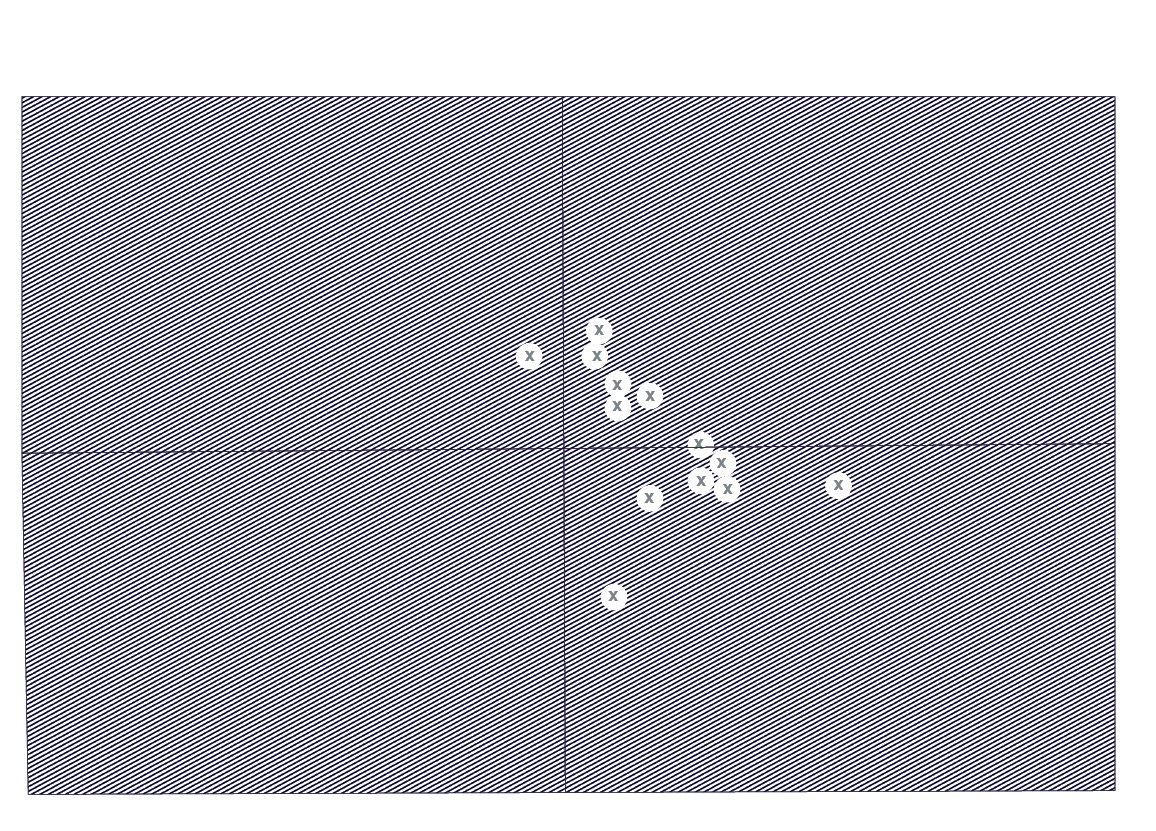
Most likely adding to this map basis, Tupaia drew the islands he knew—yet he placed them following the indigenous Oceanic model of navigation, which invokes the idea of a path-like journey from island to island. This model of wayfinding was sacred knowledge, exclusively shared amongst selected individuals in a training process spanning years. As far as my limited understanding is concerned, the Oceanic navigation method sets the travelling boat as the centre of a three-dimensional and sequential model of the world, a model in which stellar patterns, winds, cloud formations, reflections, currents and the landmass of islands pass by the canoe, which remains the point of reference for all navigational considerations throughout a journey. Mapping an itinerary is thus enacting a past or potential journey remembered through the reciting of a chant, or a narrative, listing islands, ancestors or constellations that all represent forces and patterns as they may be witnessed from the core of a 1:1 model—the boat. The boat is the centre of a navigational practice that observes manifold occurrences in the surrounding circular plane of water, the hemisphere above and their intersection in form of the horizon.
Tupaia’s map thus points at a situation, in which two distinct models of the world collided: first, the Western model of the world, heavily dependent on the existence of actual maps, reflected in the political power relations exerted by them. In abstracting what it measures, Western map-making relies on two-dimensional projection and removes the observer’s position from what is mapped, passing on the observer’s perspective to a disembodied god’s-eye view from above, which organises space according to the rigid setup of four cardinal directions. If educated in a Western context, one is accustomed to this translation of space to an extent that understanding and relating to alternative modes of mapping becomes an elaborate exercise. Second is the Oceanic model of the world, which shares so little with the Western model that there is no common ground for making them converge: one is first inclined to think they are incompatible regarding the actual making of a map on a piece of paper that would serve both models. Tupaia, however, must have observed very closely how Cook and his crew employed the compass and sextant, and how they set up maps according to the observations gathered by these tools, ultimately making all components of the map face north. The islands that Tupaia drew himself, interestingly, were positioned according to an understanding of space that he invented—a hybrid amalgamation of Western and South Pacific thinking.
Tupaia’s mapping method makes the origin of the Cartesian coordinate system (the intersection of the north-south and east-west axes, the zero point) correspond with the position of the sun at twelve noon (indicating north most of the year in the Southern hemisphere). The word Avatea, Polynesian for “god of light”, can be deciphered close to the origin, next to which a boat was drawn. Following the indigenous Oceanic model of the world, this means the travelling canoe and thus the travellers’ perspective, including their navigational skills, is set as the centre of reference for the islands contributed by Tupaia.
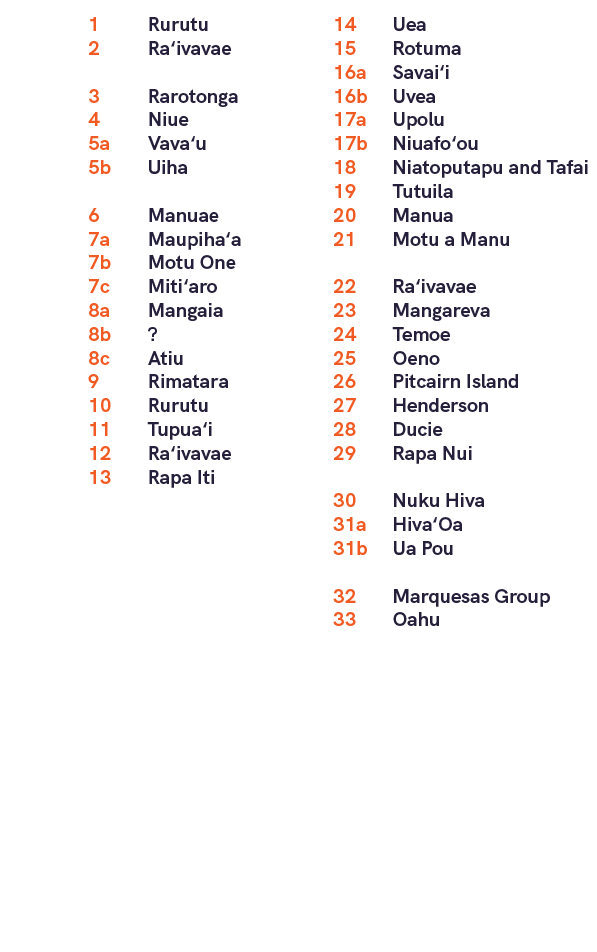
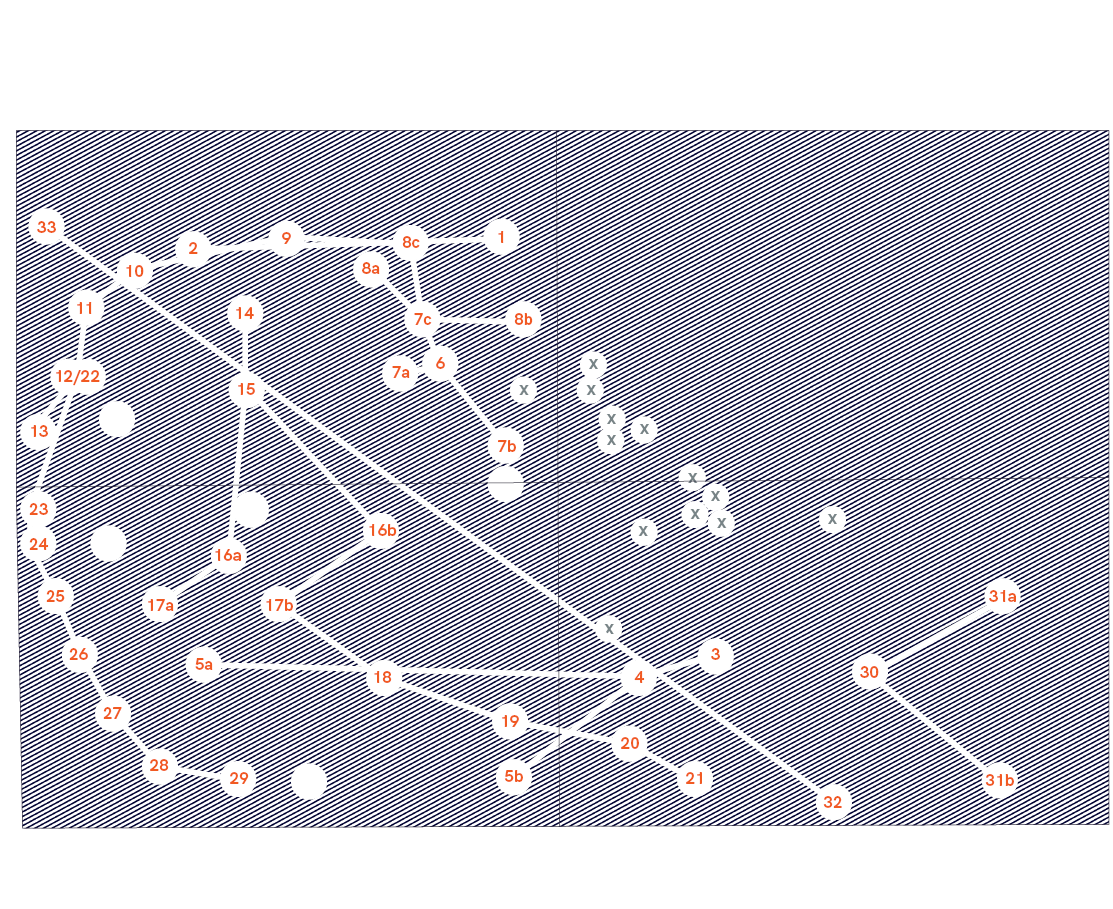
By looking at the lists of islands noted in the diaries of Cook and other marines and scientists in the process of the making of the map, Eckstein and Schwarz discovered that these lists were composed like routes, linking single stops of a series of separate journeys, altogether stretching across an area about 8.000 kilometres east to west, from the Samoa region to the Easter Islands, and about 6.000 kilometres north to south, from Hawaii to the Austral islands. 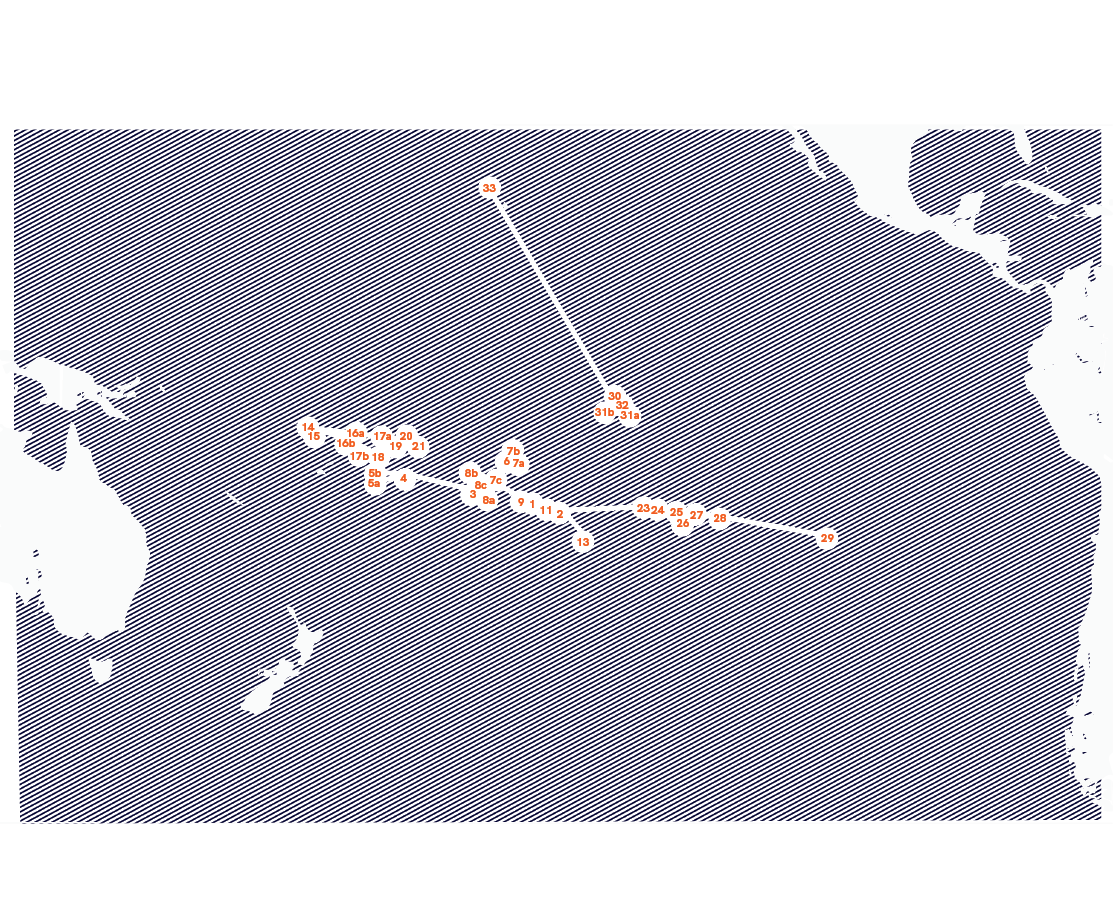
Bringing together various transcriptions and translations, Eckstein and Schwarz identified most islands and could then draw onto the existing map connections from island to island according to the sequences recited by Tupaia to the Europeans, which they figured must represent the single stops of a narrated journey—Eckstein and Schwarz (re)constructed the basis of their argument through the practice of redrawing. To comprehend the underlying logic of Tupaia’s map, according to Eckstein and Schwarz, knowledge of the routes is key. Two imaginary lines must then be drawn: one between Avatea (the zero point at the centre of the paper) and the departure island (1) and another one between the departure and the destination island (2). The clockwise angle measured between the lines at the departure island marks the course to be taken (110°). On the Mercator projection map on the previous page, the same 110° angle can be measured between an imaginary line running north at (1) and a line connecting (1) and (2).
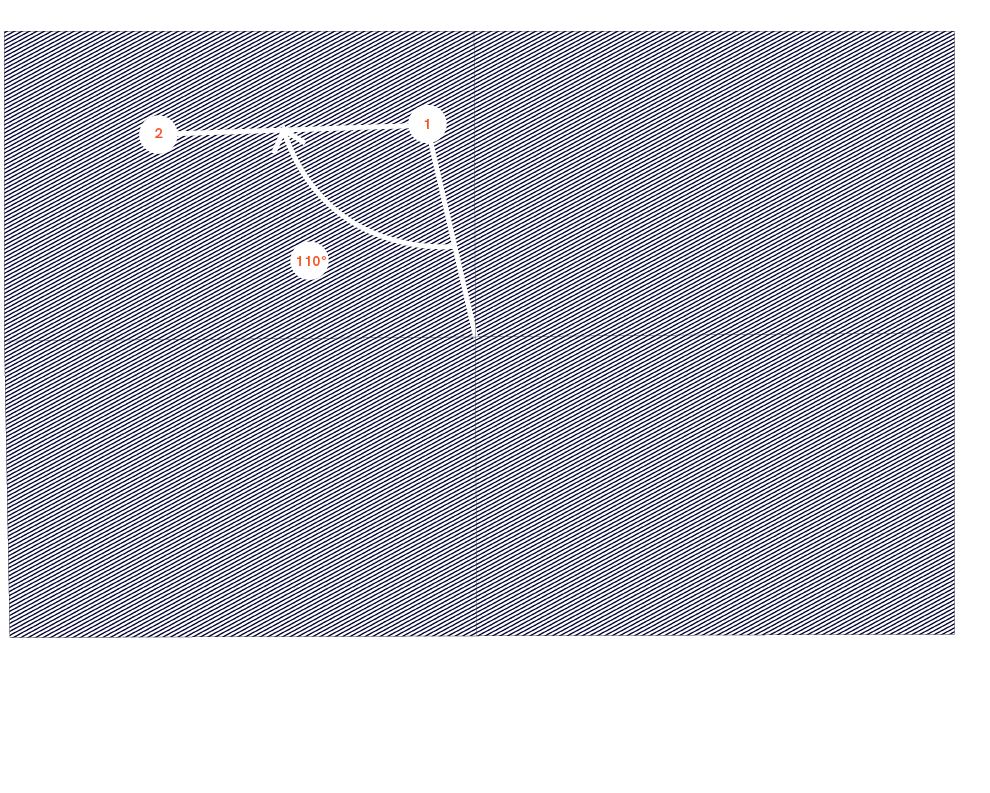
On Tupaia’s map, the absolute location of an island is irrelevant; for example, upon which quadrant of the map the island is placed or whether an island is next to another one in the overall arrangement of islands. Instead, the island’s relational positions along the given route are crucial. While Tupaia could apparently acquire the conventions of Western navigation and map-making in a very short time, the Europeans aboard the Endeavour were seemingly unable to make sense of what Tupaia drew (even though they spent around 16 months learning from one another—Tupaia died in December 1870 during a stop of the Endeavour in Batavia, today’s Jakarta, probably from dysentery or malaria8), and thus until recently it was not possible for Western researchers to decipher the logic of his map.
Regarding the rehabilitation of Oceanic wayfinding skills in the Western scientific realm, the practice of re-enactment plays a key role. In 1980, Hawai’ian Nainoa Thompson, trained by Micronesian master navigator Mau Piailug, accomplished the return trip from Hawaii to Tahiti without the aid of Western instruments. Instead, he relied on ancient Oceanic wayfaring knowledge and thus proved its capabilities through the re-enactment of journeys existing in native oral traditions. Eckstein and Schwarz’s approach, although they do not describe it as such, can be considered a re-enactment of the map’s drawing process: only through retracing island after island following the order of the lists recited by Tupaia could the scientists discover that he had invented an astonishing hybrid logic of two-dimensional abstraction to make the islands he remembered following the Oceanic world order fit onto the map set up after the European model. Educated to understand maps as stand-alone forms of representation devoid of any practice, the tricky aspect for Western researchers regarding comprehending Tupaia’s map lies in the fact that Tupaia translated his navigational knowledge not to a piece of paper alone, but to a practice that relies on the combined usage of map and navigational instruments/skill sets in the form of a navigational enactment. Even though some aspects regarding the making of the map and some of its contents remain unclear, Eckstein and Schwarz’s contribution underlines that the map’s status as an object only unfolds its potential in combination with the (re-)enactment of its journeys, literally with the bodily practice of measuring the angles so one can interpret it.
It must be noted that the objects collected during Cook’s travels became rare curiosities in European collections. These collections shaped one-sided views of “exotic” colonised parts of the world by supporting existing stereotypes and constructing histories from an arrogant and superior point of view.10 Two paddles, for instance, are amongst the James Cook collection housed by the Weltmuseum in Vienna. They bear low inventory numbers, 24 and 39, and mark the beginning of the Habsburg’s ethnographic collection. Following Habsburg imperial orders, the Vienna-based Cook collection was bought in 1806 at an art auction in London, since the collection originally established by Ashton Lever, a friend of Cook, had to be sold due to financial reasons.11 The belief that the Habsburg monarchy, which did not possess large territories overseas, does not have a history of colonialism is a misconception: the Habsburg monarchy had a vital interest and involvement in colonial power structures and building political and trade relationships. Equally, the Habsburg monarchs had a vital interest for image cultivation and imperial self-glorification as a demonstration of power, conquest and possession. To build a museum collection in this context entails creating a small world, including a world order, according to which its components are classified and that reflects the views of the world’s creators and their omnipotence within.12 The collection even continues to do so after the creators’ death, thus surviving its creator. In this light, these two paddles sitting in a museum in central Europe unquestionably become trophies of victory.
Unlike artefacts such as the two paddles, Tupaia’s map does not make a straight-forward exhibit in a colonial collection. First, its original drafts, as they are lost, cannot be possessed—the map only exists in the form of copies made by others. Its logic exists in an ephemeral form, floating between different physical instances and it cannot be collected in a single location or object. Second, it is too complex; having posed a riddle to researchers for centuries, it thus fails to serve the European understanding of superiority. Instead, the practice of re-enactment is needed to shed light on the map’s ingenuity—re-enactments are often employed subversively by artists to generate differentiated and alternative readings of histories, complexifying the positions of closeness and distance in relation to a past event.13 Third, to make sense of the map, one must understand that the Western way of mapping is not the only way of modelling the world but instead, one of many. Having realised that many world models exist, one cannot fall for the misconception of confusing the constructed model with the world.
Tupaia must have had a deep understanding of this, otherwise he would not have been able to mediate between two radically different models—a stance also adopted by Eckstein and Schwarz that entered Western science history in New Orleans in1931 when mathematician Alfred Korzybski introduced his research on mathematical semantics:14 he argued that an abstraction of a “thing” cannot be equated with the “thing”—meaning that an abstraction must be considered as different from what it abstracts. A map is different from the mapped territory; a model is not what it models.15
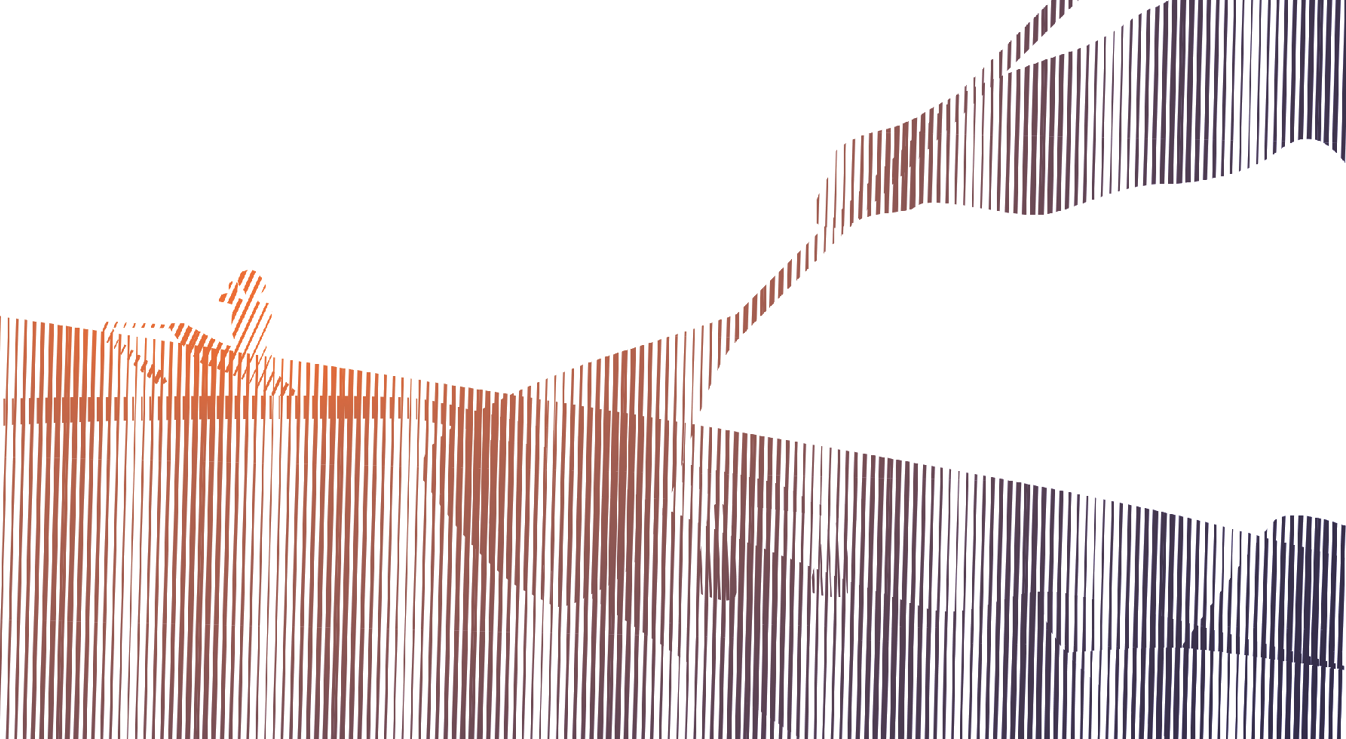
Anthropologist, philosopher and cybernetics theorist Gregory Bateson paid homage to this re-evaluation of mental models outlined by Korzybski. In the 19th Korzybski Memorial Lecture from 1970 that Bateson was invited to give, entitled “Form, Substance, and Difference”, he asked, “But what is the territory? Operationally, somebody went out with a retina or a measuring stick and made representations which were then put upon paper. What is on the paper map is a representation of the [one] who made the map … The territory never gets in at all”.16 Bateson’s query explores the role of the observer in the making of the map, thus making the observer part of what is observed. This is a classical motif of so-called second order cybernetics. Second order cybernetics, also called the cybernetics of cybernetics, is a revision of classical cybernetics—the science of interaction in organic, mechanical and social environments. Classical first order cybernetics can best be described by the infamous physics example of the thermostat: a thermostat regulates the indoor temperature in a cold climate by constantly measuring temperature. If the temperature falls beyond a set value, the thermostat functions as a switch that turns on a heating device. If the (constantly measured) temperature is above the set value, the thermostat switches off the heating. The described scheme is embedded in a self-regulatory circular logic of causal relations: the thermostat’s switch controls a heating device interfering with and altering the very condition measured within the scheme. This circular logic of gathering information that then causes an action that feeds back into the overall situation is the core of cybernetics.
The term “cybernetics”, interestingly, goes back to ancient Greek expressions involving navigation: Kybernetes is the steering wheel or skipper, and Kybernetike tekhne is the term chosen to describe the art of navigation by Aristotle, who claimed that this art connected skilled knowledge with setting in action a goal-oriented activity.18 It literally describes the process of steering a boat, considering the actions needed for counteracting drift and wind, for example, and confronting unforeseen circumstances to remain on a chosen course. To cope with the space of the sea in constant flux, the skipper observes the ever-changing environment and the activities set within, to be re-evaluated and adjusted continuously. In this classical Aristotelian example, the person steering the boat is an observer of what is happening in the surroundings, and also of their own role within—a self-reflective stance.19
It is with this crucial aspect of including the observer that second order cybernetics is concerned. It is a “relativist epistemology”,20 insofar as it seeks ways in which knowledge may be gained, acknowledging any account as “biased, partial, and incomplete”21 and thus questioning the notion of absolute objectivity—by fully appreciating the role of the observer. Second order cybernetics deals with the practice of observing settings—while first order cybernetics investigates observed settings, which occlude their observers and keep the circularity within what is observed, and does not extend the circularity to the role of the observer. In contrast to the initial example of the thermostat controlling the heating device, a setting in which the roles of “controller” and “controlled” are fixed and imply a hierarchical order, in second order cybernetics, these hierarchical roles are not fixed: each part of the setting, including the observer, is mutually affecting and affected.
Second order cybernetics was introduced into the scientific realm by anthropologist Margaret Mead. At the newly founded American Society for Cybernetics inaugural symposium in 1967, Mead gave a keynote lecture that the symposium’s organiser Heinz von Foerster later titled “The Cybernetics of Cybernetics”.22 Mead’s seminal keynote paper defined “cybernetics as a way of looking at things” and set the tone for practising this way of observation in a self-reflexive manner, drawing upon the competences she had gained in the field of anthropology and applying them within the context of a newly established society. “The competence I had—or have—comes from the intensive analysis of very small, relatively isolated … communities which serve as living models from which one can sometimes develop larger, more formal models.”23 In the paper, Mead further suggested that the newly founded cybernetics society should consider itself as a form of cybernetics, treating the society as a cybernetic cyclical setting and applying cybernetic methods to their own organisation and way of working. The paper’s importance lies in its highlighting the researcher’s self-reflective attitude of acknowledging and integrating one’s own role within the observed setting, while being aware of potential consequences—core motifs of second order cybernetics.24
I am wondering whether the physical relocation necessary for anthropological fieldwork can be considered a performative act of immersion in the field? If so, the relocation and immersion make a statement about the researcher’s position being mobile, consciously enacted and embedded in a mutually dependent relationship with the examined environments. Resurfacing in Mead’s radical proposition of second order cybernetics, these aspects reflect her understanding of anthropology. Cultural anthropology, as characterised by her teacher Franz Boas,25 was opposed to theories of unilineal evolution and racism,26 instead propagating cultural pluralism and relativism.27 This understanding met a sense of urgency regarding the observation of small independent cultures before they vanished, being transformed by the dominant Western lifestyle. Mead’s ground-breaking study Coming of Life in Samoa from 1928 made her one of the most popular mid-20th century US researchers.
Undertaking research in New Guinea, Mead met Gregory Bateson in 1932, the polymath who, years later, would give the lecture on territory and maps mentioned above. With their marriage from 1936 until 1950, their relationship did not separate their private and professional lives; on the contrary, it was intended to be a synergetic relation that would inform their collaborative research, providing mutual enrichment of Mead’s and Bateson’s individual thinking.28 Bateson’s logical mind and interest in theories of interaction, circularity and learning theory met with Mead‘s notions of culture and personality.29 Their joint research interest led them to anthropological field work in Bali and New Guinea, convinced that the models distilled from the observations were mobile and thus could be reapplied to their own culture when back home.30 Their research met with a growing consciousness among Americans of their own culture, whose condition was believed to be in need of attention after the Great Depression. With the beginning of WWII, the need from the part of the US government increased dramatically for scientific explanations of how different enemy cultures functioned. To understand motifs and predict behaviours, Mead and Bateson developed their anthropological works in close alliance with the US government, which also exploited science. Bateson was in charge of breaking the morale of the Japanese in his work in Southeast Asia in 1944 and 1945 and became increasingly alienated from his toxic task.31
Mead’s and Bateson’s work after the end of WWII was propelled by the intention to connect cybernetics with a peaceful reconstruction of the globe.32 The interdisciplinary Macy conferences, held between 1946 and 1953 in the United States, bear witness to this fact. Here, experts from the fields of mathematics, physics, electrical engineering, psychology, neurophysiology, psychiatry and sociology met, intending to bridge the different fields by the help of cybernetic models. The American Society of Cybernetics was founded as a logical follow-up of the Macy conferences—it was at the society’s inaugural symposium that Mead gave the second order cybernetics keynote. Alluding to their productive collaboration, Mead reported that the impetus for the paper was given to her by Bateson. During a conversation with Stewart Brand and Gregory Bateson, Mead recalled “I went back to the correspondence, Gregory, where you had proposed that we plan an organization in relation to its purposes.”33 In the keynote speech, she therefore suggested that the newly founded society should not simply treat cybernetic circular settings as a so-called research object but instead investigate its own practice as such a setup—thus proposing the seminal shift from detached observed settings to an environment acknowledging the role of participant observers. This inclusion of participant observers marks a twofold practice of observation: examining oneself as a part of the setting involves a practice of instancing, meaning to exist twice. Within the model mapping the observation, the researcher must create a form of abstraction of their own stance (an instance of the self). This open-ended catalyst model is in 1:1 scale, an invisible coextensive second layer surrounding the body while working.
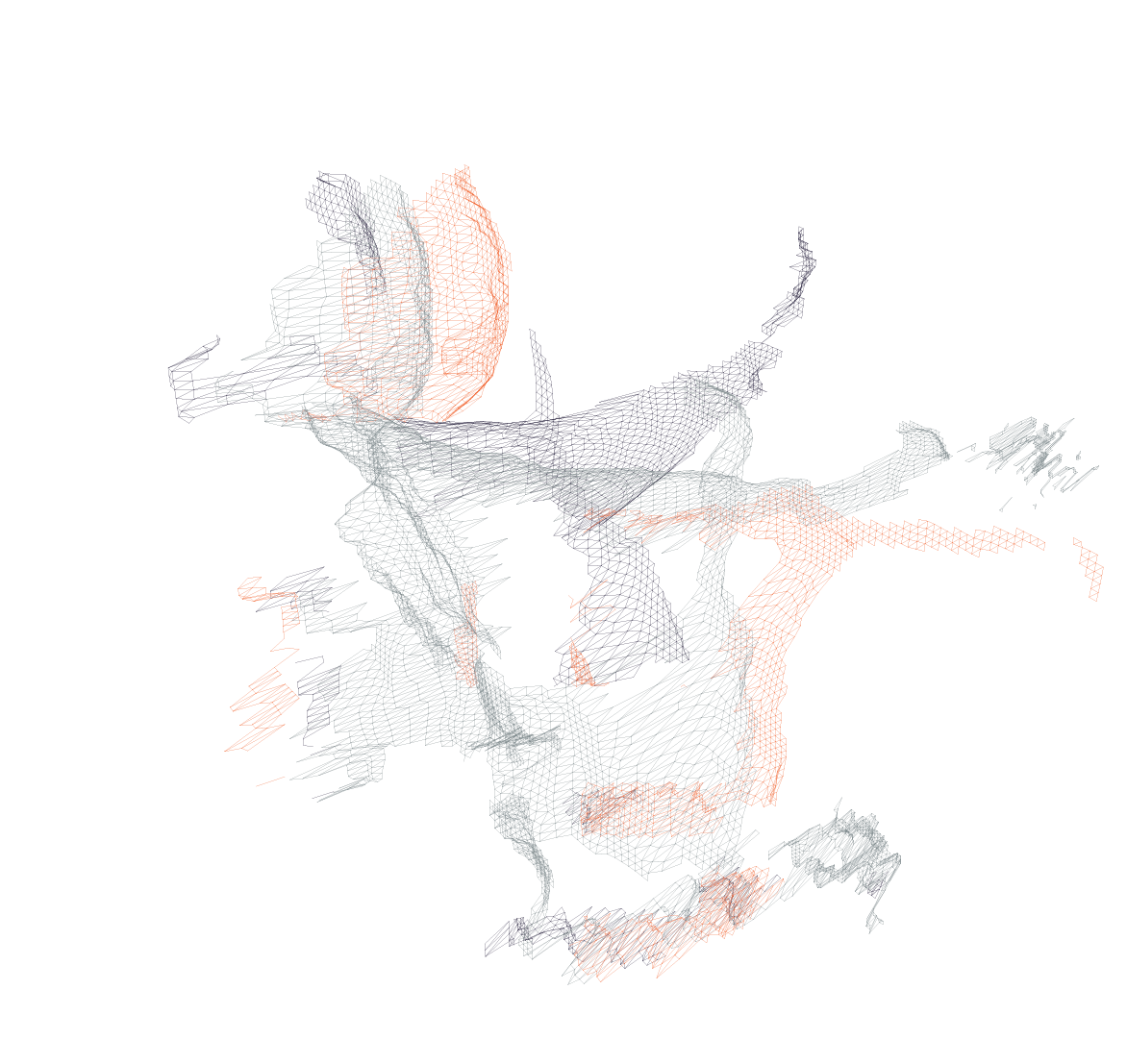
Mediums such as film and computer games are crucial in visualising the practice of doubling the self. Interestingly, again, boats and navigation are involved: the Lumière Brothers’ cameraman, Alexandre Promio, for example, used a camera attached to a Venetian gondola to capture a travelling shot of the Canal Grande in 1896. A traveller’s gaze from a vehicle onto the landscape was transferred to the camera, and ultimately to film. Since it embodies a first-person view, this film sequence can be credited with being a so-called phantom ride, a film clip shot by a camera attached to a vehicle (boat, train or car) to overcome the limitations of static shots.34 The key feature of these camera-vehicle setups is that they mimic a human perspective—be it the protagonist’s or the narrator’s—and thus materialise a very particular form of a phantom: the fantasy of looking through someone else’s eyes during a limited span of time. Phantom rides, amongst other cinematic forms of subjective vision, signified a paradigm shift from mere observation, which only allows the viewer to guess what another person is looking at and what they are moved by, to actually allowing the viewer to look through another person’s eyes.35 Watching is a productive act on the part of the human body: through a mediating practice, bodies create their own versions of the moving images they look at.36 Letting themselves be immersed in a cinematic narrative, these watching bodies inhabit the point-of-view shots offered by the camera eye via a second self. Disbelief, which is the moment the phantom is born and one becomes aware of the camera as the second self, only occurs at the level of reflection on the shot design and behind-the-scenes setup responsible for the often ingeniously realised camera rides.
In its function to construct a visible second instance of the observer’s practice, the phantom can be linked to the avatar. Unlike the phantom embodied by the observers (i.e. a camera in a film, whose path is pre-recorded to be watched by the audience at a later point), an avatar is free to move within the extents set by the game, referred to as a practice of navigation. Avatar means “descent” or “incarnation” in Sanskrit. In contrast to the Christian notion of incarnation, in which god becomes human flesh (while flesh is usually associated with sin), the avatar keeps their divine characteristics. In contemporary computing language, an avatar is the graphical representation of a user’s persona in the digital realm37—in other words, the avatar stands for the embodiment of a digital entity; it is a movable presence capable of navigating a world, which is registered as it passes by the avatar. To my mind, this rendering of a world shares certain aspects with the ancient Pacific model of navigation—one major discrepancy, however, might be that the players’ bodies are likely not to travel and remain in a seated position. Akin to “a sentient cursor” offering an embodied camera view, the avatar acts as a projection of the player into the digital realm38—realising the encounter of a second self, sometimes described as a “narcissistic satisfaction”.39
The most debated and best-known computer game avatar is arguably Lara Croft. The phenomenon of Croft, the “multi-million dollar advertising commodity”,40 was received in polarised ways by feminist critique in the late 1990s and early 2000s. On the one hand, the presence of a female lead was welcomed, particularly in a popular computer game that defined the technological state of the art of that time. Developed by software company EIDOS and published in 1996, Tomb Raider was part of the campaign promoting the Sony PlayStation, which presented “a navigable three-dimensional space” and a degree of natural shading and interactivity not previously achieved.41 Similar to heroines appearing in action movies, such as Trinity from The Matrix, Tank Girl or Wonder Woman,42 Croft performs exceptional moves, subverting ordinary conceptions of what a woman’s body can do and thus sabotaging what is considered the female norm in a typically male-dominated domain such as the computer gaming practice of the time. These bodily reinventions make the female lead “open to potentially queer identification and desire” when (predominantly) male players navigate the game’s space through the movements of a female avatar, which thus eases the restrictions of pre-defined and rigid genders.43 On the other hand, the employment of a female lead such as Croft is considered questionable and highly strategic in terms of a marketing ploy:44 Croft is a form of objectified spectacle, controlled by the (usually male) players, popularising and encouraging views that reduce females to their physique,45 the “eroticised object of the male gaze”, featuring “exaggerated breast size, tiny waist, large eyes, large mouth”.46
An interesting inversion can be observed in Lara Croft: Tomb Raider from 200147 and Lara Croft Tomb Raider: The Cradle of Life from 200348, both starring Angelina Jolie: these films take the game as a model. Jolie performs stock poses bringing to mind the game avatar; her stunts mimic the avatar’s capabilities.49 Critiqued for poor character definition,50 the films also reduce the possibilities offered in the game: on the big screen, Croft becomes merely a body to be looked at, while the computer game involves two functions, of a body being looked “through” and “at”—the player enacts the avatar, being her, and looks at the screen, seeing her. A recent analysis distinguishes between the reception of the so-called “old Lara”, the avatar originating from 1996 with a Barbie-like unnatural physiognomy, and the “new Lara”, the updated avatar for the re-launch of the computer game in 2013, which adopted more natural features as a point of departure for an on-screen appearance (still, however, unachievable for most women). This change was likely due to the involvement of Rhianna Prachet, the female head scriptwriter of the reboot of the series, who intended to address existing awareness regarding sexism in computer games.52 “New Lara” is more vulnerable, both physically and mentally—the introductory sequence shows a session with a psychologist. Different interpretations are possible: either existing views of the female as weak are supported, involving the notion of the hysteric, or the character actually gained more depth. Still, making Croft more “natural” does not change the initial premise. Instead, it weakens the uniqueness of the avatar.
Croft is not a highly developed persona as would likely be true if the character originated in a play or film; her appeal is rooted in her appearance not being derived from the “natural” female body. Conversely, her image’s distance from it is key: featuring a very stylised, artificial aesthetic, Croft resembles an anime character. Alluding to the attachment of their admirers with these forms of representations in comics, cartoons or video games, this kind of depiction is called nijikon fetchi, which means “two dimensional fetish” in Japanese.53 Media theorist Kim Walden calls this a form of “video game vernacular” or “contemporary media vernacular”, a non-standardised aspect of culture.54
Another form of media vernacular relating to Croft can be found in mid-20th century Western film noir: Croft’s appearance has also been connected to cinema’s femme fatale.55 A femme fatale is, first, subject to the male voyeuristic gaze and second, potentially threatening to male dominance due to her powerful and active role. Croft’s powerful “navigation” of male-dominated territory, use of guns and “indifference to the male gaze”56 is characteristic of the prototypical femme fatale from cinematic narratives, who sabotaged accepted conceptions of the female in the 1940s.57
Shifting the focus from looking at Croft as a body to navigating with her as an avatar sheds light on yet another form of vernacular. Indicating a specific coordinate in computer game space, the avatar is the spatial construct of a pointing gesture. It materialises the practice of pointing from the part of the player that sets up vectors or directions for the avatar to follow. In action-adventure games such as Tomb Raider, the avatar navigates a “ludological structure” that is “progressive, rather than emergent”58—meaning that the avatar’s, and thus the player’s, fate is determined by the game’s script. Within this genre, the joint scope of action of the player and avatar is beyond limited. The circular relation of controller/player and controlled/avatar is defined by the game’s script and is rather rigid; subverting and using the game for purposes it has not been programmed for is thus difficult. Being the epitomisation of an action-adventure avatar—in my opinion—Croft is a digital embodiment of the mythologically misunderstood relationship model between men and women, as defined by Sigmund Freud. In a description of his own romantic relationship, Freud reduces a man’s relation to a female counterpart to three possible options from the man’s perspective: the woman can give birth to the man, accompany him as a lover and companion or, finally, take his life—this being associated with Mother Earth.59 Freud’s heteronormative and misogynistic concept of femininity draws on the ancient Greek mythology figures of Moirai, the goddesses of fate,60 who are the embodiments of the destiny assigned to a person. Clotho spins the thread of life, Lachesis allots it and Atropos cuts it.61 This three-partite distribution of power can be easily transposed onto the circular relationship constructed in a typical action-adventure computer game between player and avatar: when the avatar appears on the screen, the game begins in digital space—she opens up the digital world to players, giving birth. By the same token, players only have the opportunity to move around in this world by navigating the avatar, and thus she becomes a companion. If the avatar dies in the digital world, the game is over. She pulls players with her to their death and becomes the one who takes life. As such, the problems of Croft’s avatar not only lie in her bodily appearance but also result from the ludological setup of the action-adventure game itself.
A loophole within this grid-locked, predictable and rigid circularity in the relationship between player and avatar could lie in a different form of acknowledging the presence of the body on this side of the screen: users’ bodily functions are reduced to operating a controller, and their physical bodies (usually remaining in a seated position) are out of focus. This is perhaps rooted in the misunderstanding of equating on-screen existence with physical disembodiment62—a thought incompatible with the notion of an embodied observer enacting a film’s content, as previously argued.
Osmose for example, a pioneering virtual reality artwork by Char Davies from 1995, complexifies the practice of interaction by making the user’s physical body part of the encounter of the digital world in novel ways.63 Being a work of virtual reality, the avatar is not visible on the screen—the so-called “immersant” looks through the avatar’s eyes and is presented with a subjective point-of-view shot in the headset’s screen. To navigate the digital environments presented in Osmose, that are continuously fading in and out, the immersant’s breath and balance are registered by a bodysuit. Breathing in results in upwards movement and breathing out in a descent—very similar to the experience of diving. The installation allows room for both instances of the immersion: one screen shows the subjective point of view of the immersant, while another translucent screen offers a view into the cabin in which the immersion occurs, rendering the silhouette of the immersant visible through back projection.
The mixed state between digital and physical offers new ground for ways to be human as it has not been experienced before. As terrestrial beings, humans move on top of their supporting medium. They tend to scan their surroundings for more or less horizontal surfaces to move upon. In vertical planes, they tend to look for openings to move through: edges of planes that first occlude and then, with the moving body having proceeded further, open up a new view play a central role in terrestrial vision and thus the three-dimensional understanding of space. On the contrary, species such as fish and birds move within their supporting medium of water or air—their understanding is more graphical and pattern based.64 Having ventured into the digital realm, the terrestrial surface can no longer be taken for granted. Vehicles, such as a boat or an avatar, are needed in order to be able to travel substantial distances within this realm, akin to being on the open water.
Vehicles—or devices—can deliver particular articulations of space beyond the binaries of digital/physical and zero/one, as they address a range of mixed realities. Theo Triantafyllidis’ theatrical installation Anti-Gone, which premiered at the 2020 Sundance festival, deliberately plays with the different realities that accompany the various body-technology pairings. Fusing physical performance with live-generated digital content, it creates the portrayal of a couple that navigates a flooded post-climate change world in a boat.65 Despite living together physically, the couple does not share the same reality—instead, one actor is immersed in a virtual reality setting, whereas his female counterpart is more grounded in the physical realm, with her movements being captured via a bodysuit and transferred to an avatar on the screen.
Triantafyllidis’ protagonists make it apparent that they exist in different realities. On the stage, they perform within their characteristic spaces. Resulting in miscommunication and misunderstanding, their performances are statements on the different ways in which technologically-aided practises of embedding, embodying, enacting and extending can be realised. The play acknowledges the perspectives of avatars and bodies as non-finite and thus leaves much space to live improvisation; it pushes the limits of pre-written and pre-programmed narratives and allows the play to open up for the unexpected, even involving online audience interaction via live stream, in some cases.
By undermining traditional forms of identity and subjectivity usually tied to the enclosed unit of the physical body, mixed reality setups blur the boundaries of physicality and technology and can provide an audience with a malleable architecture of astonishment that subverts and plays with expectations. We thus come full circle with the example given in the beginning of the “disarming experience” of noticing the earphones that the person is wearing, clearly talking to themselves—surprises are welcome.

